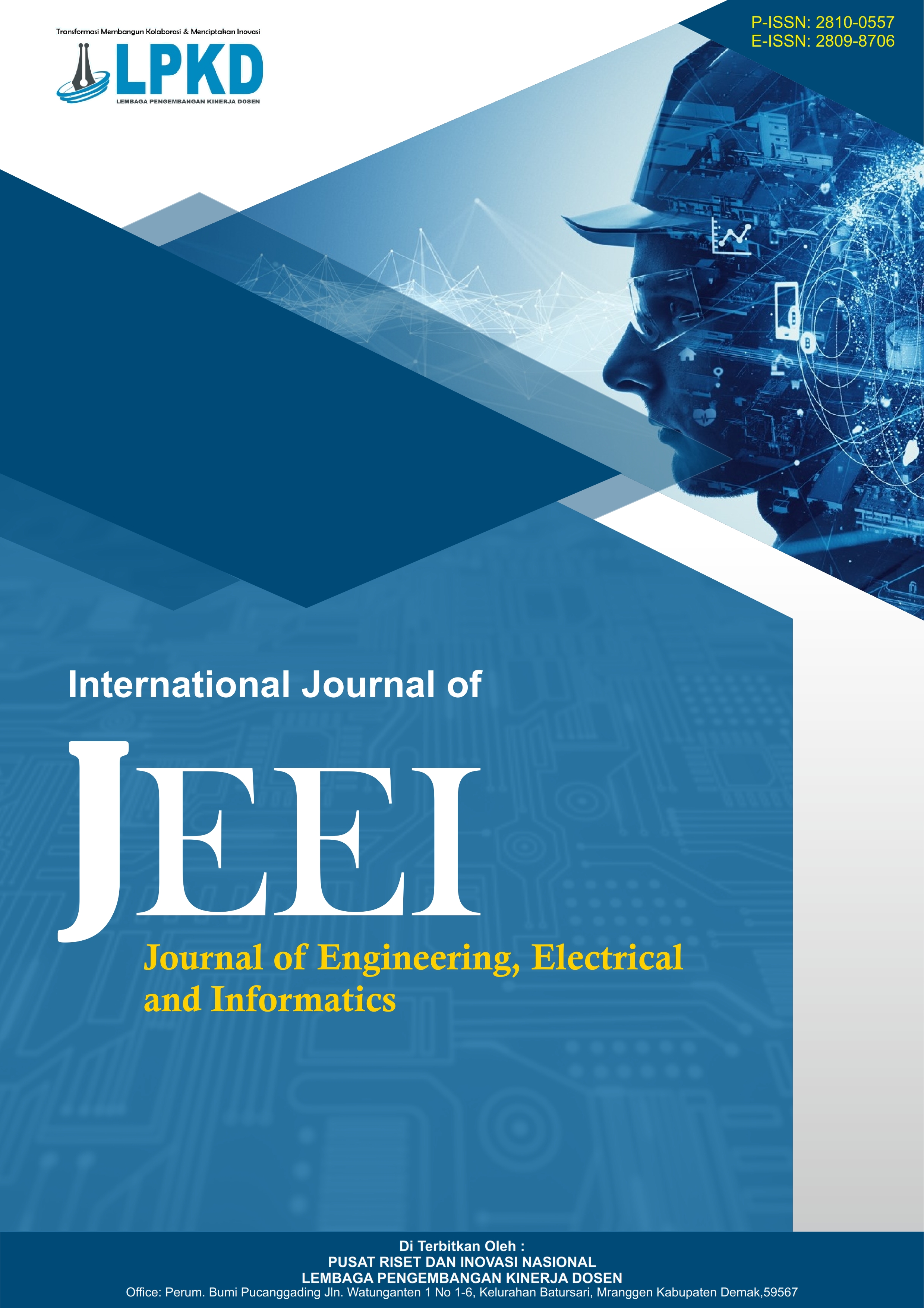Analysis and Handling of STA 1+325 SD 1+475 Embankments in the Construction of the IKN Toll Road, Balang Island Bridge Segment – Sp. Riko
DOI:
https://doi.org/10.55606/jeei.v5i3.5361Keywords:
Embankment stability, Geotechnical analysis, PLAXIS modeling, Replacement, Soil bearing capacityAbstract
The construction of the IKN Toll Road on the Balang Island Bridge – Sp. Riko segment serves as a strategic infrastructure project aimed at enhancing connectivity and accelerating regional development in the Indonesian Capital City area. However, within the STA 1+325 to STA 1+475 section, complex geotechnical challenges were identified due to the subgrade’s low bearing capacity and high consolidation potential. These conditions threaten the embankment’s stability, which could affect construction quality and long-term performance. This study analyzes the subgrade characteristics, evaluates embankment stability, and proposes effective improvement methods based on geotechnical design standards. Field investigations, including sondir testing, soil laboratory analyses, and numerical simulations using PLAXIS finite element software, were conducted. The analysis involved assessing bearing capacity, consolidation settlement, and slope stability under both normal and seismic conditions. The selected improvement method—subgrade replacement with a 2.0-meter-thick material—successfully increased the safety factor to 1.715 under service conditions and 1.258 under earthquake conditions, while reducing potential settlement to acceptable limits. These results demonstrate that the replacement method effectively enhances embankment stability and ground performance. Hence, this technique is recommended as a reliable geotechnical solution for toll road and other infrastructure projects facing similar subgrade challenges.
References
[1] D. T. Bergado and N. Miura, “Improvement Techniques for Soft and Subsiding Ground,” in Lowlands, Routledge, 2022, pp. 103–133.
[2] K. Lesov, M. Kenjaliyev, A. Mavlanov, and S. Tadjibaev, “Stability of the embankment of fine sand reinforced with geosynthetic materials,” in E3S Web of Conferences, EDP Sciences, 2021, p. 2011.
[3] H. Sujatmiko, “The Effect Of Holcim Cement Substitution On Fine-Grained Soils Its Influence On The Stability Of Soil Bearing Capacity Using The Terzaghi Method And Meyerhoff Method,” Int. J. Eng. Sci. Inf. Technol., vol. 3, no. 4, pp. 19–24, 2023.
[4] E. Cascone, G. Biondi, and O. Casablanca, “Groundwater effect on bearing capacity of shallow strip footings,” Comput. Geotech., vol. 139, p. 104417, 2021.
[5] A. El Hariri, A. E. E. Ahmed, and P. Kiss, “Review on soil shear strength with loam sand soil results using direct shear test,” J. Terramechanics, vol. 107, pp. 47–59, 2023.
[6] R. C. Mamat, A. Ramli, A. Kasa, S. F. M. Razali, and M. B. H. C. Omar, “Artificial neural networks in slope of road embankment stability applications: a review and future perspectives,” Int. J. Adv. Technol. Eng. Explor., vol. 8, no. 75, p. 304, 2021.
[7] S. Kumar, S. S. Choudhary, and A. Burman, “Recent advances in 3D slope stability analysis: a detailed review,” Model. Earth Syst. Environ., vol. 9, no. 2, pp. 1445–1462, 2023.
[8] T. K. Mebrahtu, T. Heinze, S. Wohnlich, and M. Alber, “Slope stability analysis of deep-seated landslides using limit equilibrium and finite element methods in Debre Sina area, Ethiopia,” Bull. Eng. Geol. Environ., vol. 81, no. 10, p. 403, 2022.
[9] L. Hu and Z. Liu, “Analysis of deformation mechanism of soft soil reinforcement by vacuum preloading,” Rock Soil Mech., vol. 42, no. 3, p. 7, 2021.
[10] H. Guo et al., “Land subsidence and its affecting factors in Cangzhou, North China Plain,” Front. Environ. Sci., vol. 10, p. 1053362, 2022.
[11] M. Awad, A. Aldaood, and I. Alkiki, “Development of a compressibility prediction model based on soil index properties and area under/bounded by consolidation and rebound curves,” Geotech. Geol. Eng., vol. 40, no. 9, pp. 4787–4807, 2022.
[12] B. S. Olek, “State-of-the-Art Review on determining one-dimensional consolidation parameters based on compression and distribution of pore water pressure: coefficient of consolidation (cv), end of primary (eop) consolidation,” Arch. Comput. Methods Eng., vol. 32, no. 1, pp. 605–644, 2025.
[13] Y. Kang, Z. Geng, Q. Liu, B. Liu, and Y. Zhu, “Research progress on support technology and methods for soft rock with large deformation hazards in China,” Rock Soil Mech., vol. 43, no. 8, p. 1, 2022.
[14] J. Liu, K. Zhu, J. Zuo, K. Sun, Y. Sheng, and B. Jia, “Soft rock deformation and failure modes under principal stress rotation from roadway excavation,” Bull. Eng. Geol. Environ., vol. 83, no. 8, p. 335, 2024.
[15] I. A. Aini, E. I. Maulana, and H. T. Santoso, “Evaluasi Metode Perbaikan Tanah Lunak dengan Preloading Kombinasi PVD-PHD pada Proyek Pembangunan Jalan Tol Semarang-Demak Paket II,” Bentang J. Teor. Dan Terap. Bid. Rekayasa Sipil, vol. 11, no. 1, pp. 21–36, 2023.
[16] M. Jia, W. Zhu, and C. Xu, “Performance of a 33m high geogrid reinforced soil embankment without concrete panel,” Geotext. Geomembranes, vol. 49, no. 1, pp. 122–129, 2021.
[17] H. Skinner, D. G. Toll, K. Higgins, M. Brown, and J. Burland, ICE Manual of Geotechnical Engineering Volume 1: Geotechnical engineering principles, problematic soils and site investigation, vol. 1. Emerald Group Publishing, 2023.
[18] M. de S. S. de Almeida et al., “Ground improvement techniques applied to very soft clays: state of knowledge and recent advances,” Soils and Rocks, vol. 46, no. 1, p. e2023008222, 2023.



.png)
.png)


